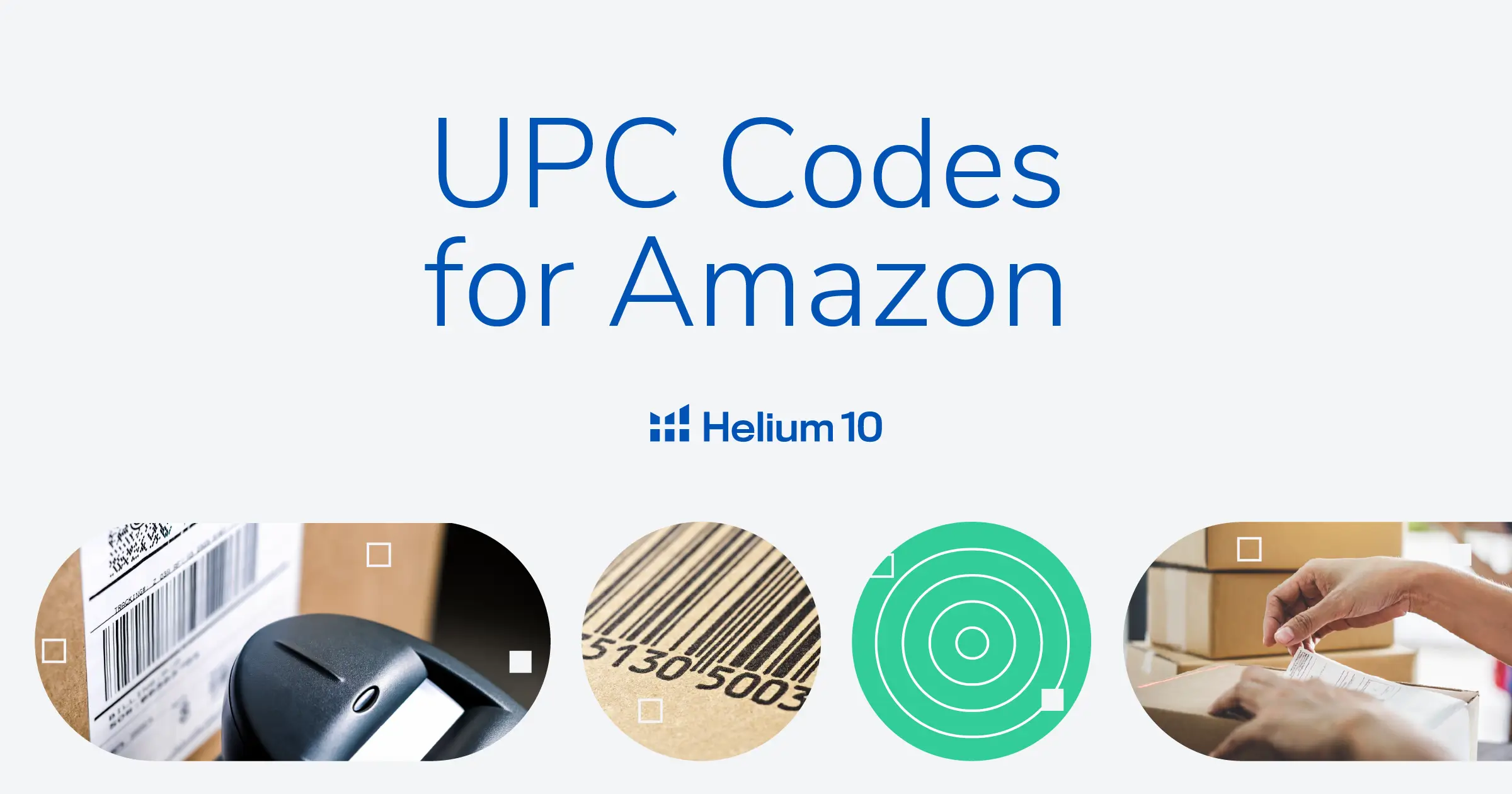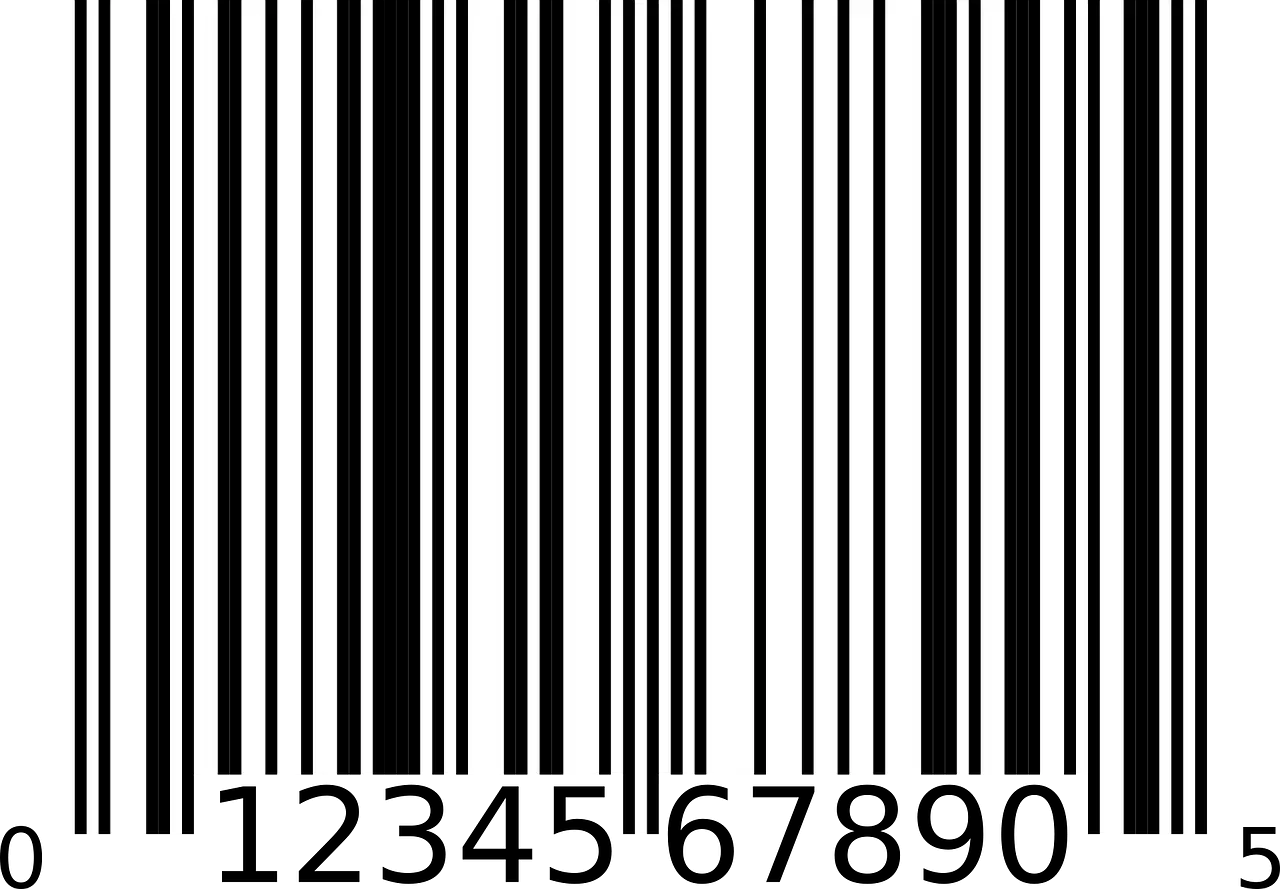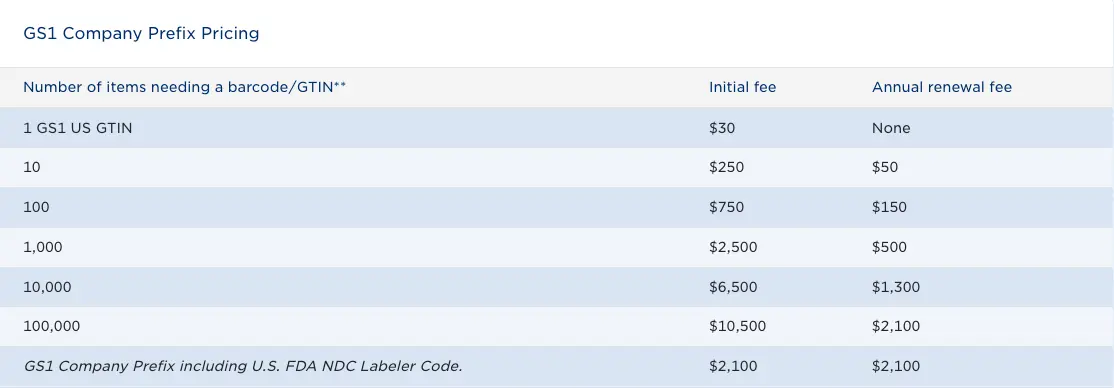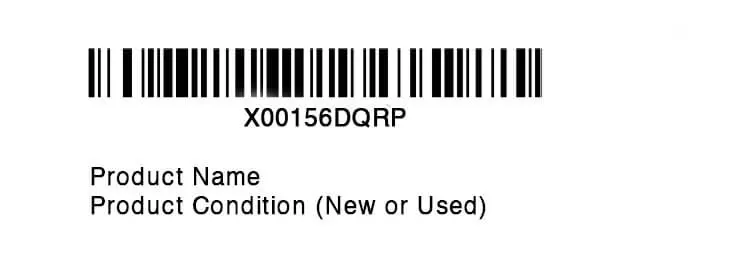
How to Buy Amazon UPC Codes


Table of Contents
- Introduction
- What Are UPC Codes?
- Do You Need a UPC Code to Sell Products on Amazon?
- When Do I Not Need a UPC Code?
- Amazon UPC Code Requirements
- Do You Need to Print UPCs on the Physical Box of the Product?
- How to Generate a UPC Code on Your Own
- How to Buy UPC Codes
- Where to Buy UPC Codes
- How to Add Your UPC Codes to Amazon
- How to List a Product Without a UPC
- Best Practices for UPC Codes
- Other Notable Product Identification Terms
- GTIN
- EAN
- JAN
- FNSKU
- ISBN
- How to Remedy Bad UPC Codes
- Conclusion
Introduction
Whenever you shop for groceries at your local store, you may have noticed a code printed on the side of each package. This identifier is referred to as the Universal Product Code (UPC) and is usually required if you’re planning on selling large amounts of products on Amazon. However, when you first begin selling online, you’ll have to find your own UPC codes since Amazon does not share the ones they already have.
In order to understand the nuances of Amazon UPC codes and the process to obtain them, take a look at the helpful and comprehensive article below.

Outclass Your Competitors
Achieve More Results in Less Time
Maximize your results and drive success faster with Helium 10’s full suite of Amazon and Walmart solutions.
Sign Up for FreeWhat Are UPC Codes?
Most often referred to as UPC codes, Universal Product Codes are helpful product identifiers that are used for retail selling. These black and white codes are comprised of a unique set of digits that are then assigned to individual products. They also function as a kind of ‘universal language’ between different manufacturers, retailers, and consumers. This helps ensure a smooth and accurate transaction each and every time.

Furthermore, each UPC code acts in a similar way to your fingerprint; they offer specific information about the item including the manufacturer and product details. Whenever you or another customer scans or enters one of these UPC codes, it immediately provides important data about the item. This, in turn, makes it easy for any business that uses them to better manage inventory, track sales, and provide precise product information to any customer.
When first selling on Amazon, utilizing UPC codes can seriously help you when listing products, identifying them from other, similar ones in the e-commerce marketplace, and ensuring that your customers can discover and then buy the correct item. With a thorough understanding of just how UPC codes work and how to properly obtain them, you can help yourself succeed on Amazon. A deep knowledge of UPC codes is even more important for Amazon sellers who have a registered brand on Amazon that you have plans to turn into an eventual brick-and-mortar location.
Do You Need a UPC Code to Sell Products on Amazon?
In most cases, Amazon will require that all items sold on their site have a UPC for inventory tracking purposes. However, they do offer a potential workaround called Brand Registry. By using this program, Amazon sellers can opt to create a new brand, enabling them to list their products without barcodes, assuming they get a GTIN exemption for that particular brand.
Additionally, if you work with a wholesaler to purchase your products, or if you’re a current Amazon dropshipper, then every one of your UPCs will be printed on all your items, making the time-consuming task of adding them yourself much easier. The only thing that you will still have to do is simply add the new items to one of your existing listings. By doing this, you will not need to always purchase a UPC and then label your products yourself.
Although, if you decide to not utilize Amazon FBA and instead opt to fulflill the order yourself using FBM, then you will only need to use one UPC, and not one for every product. A further thing to note is that it is not necessary to attach a barcode to each of your products unless you’re planning for those codes to be scanned during checkout in either a brick-and-mortar store or another e-commerce site besides Amazon.
When Do I Not Need a UPC Code?
In a few unique situations, Amazon will allow their sellers to list their new products without a UPC or other product identifier.
In cases like the above, where your product does not need a UPC, you can apply for a GTIN Exemption. If this is approved by Amazon, you will then be able to list your product on the site without a UPC.
Amazon UPC Code Requirements
To sell a product on Amazon, you’ll need to first assign special, unique UPC codes to every product and all their variations. Every UPC code is made up of three parts: the manufacturer ID number, the item number, and the check digit.
Additionally, you may be required to possess two barcodes: one directly on the product and one on the outer packaging.
Keep in mind that every UPC barcode must have adequate contrast between both the dark and the light spaces. If not, then the barcode will not be recognized by a scanner. Also, some marketplaces may have specific requirements for their barcodes, so make sure you understand them before you create your codes.
Do You Need to Print UPCs on the Physical Box of the Product?
Even though Amazon requires a UPC barcode (or another type of product identifier) for every product before a seller creates their listing, you can still avoid having the UPC printed on the product packaging when selling on the platform.
If you are selling Amazon FBA and are sending your products (without a UPC) to one of Amazon’s warehouses, you will instead be required to provide a FNSKU on each one.
This FNSKU works in a similar way to a UPC and accurately tells Amazon that the particular product is associated with your unique seller account.
How to Generate a UPC Code on Your Own
When learning how to generate a UPC code on Amazon, you will need to first understand that you cannot make your own code. Rather, you will need to purchase one from GS1, which is a non-profit organization that helps create business standards for accurate communication and retail products around the world. Additionally, there are currently over 100 GS1 organizations that specifically service different areas. When selling items in the United States, your primary contact will be GS1 US.
Once you’re ready to create a UPC code, you will need to begin with a GTIN (Global Trade Item Number) for your specific product. The differences between GTINs and UPCs may be difficult to understand, but just remember the following:
- A UPC is a black and white striped pattern that helps identify a certain product
- A GTIN is a number that does the same and is part of the UPC code
You can generate a UPC code by doing the following:
- Become a member of GS1 US. You will most likely not run into any problems, here, if your company is based in the United States.
- Obtain a GS1 Company Prefix for your item. This is simply a unique number that accurately identifies your product to companies around the world. This code is usually comprised of six digits.
- A five-digit number will then be added to your Company Prefix which helps identify your product.
- Next, a check digit will be added to the now 11-digit number. This ensures your GTIN is created correctly.
- This final 12-digit number is the GTIN for your unique product. You can also use this number to create a scannable UPC code.

How to Buy UPC Codes
Take a look at how you can go about buying UPC codes:
- You can use your 6-digit Company Prefix code to obtain a UPC code
Even though this is a good way to get UPC codes for your products, many business owners still make the common mistake of purchasing their Company Prefix from third-party sellers who themselves bought them in bulk to resell. This process results in a crucial break in the chain of authority, which in turn severely impacts the legitimacy of your Amazon brand as soon as the e-commerce site realizes your purchased UPC is not the same as the one currently registered in the GS1 database.
Because of the above, we recommend that you always purchase the GS1 code directly from the appropriate GS1 website.
Once this is done, you will need to do the following:
- Assign a unique product number to your new Company Prefix. You’re allowed to pick your own numbering system as long as the prefix is unique for every one of your products.
- Generate a UPC code. This is usually done after you receive the 12-digit GTIN.
- Determine the way you want to display your barcode on your product. Also note that if you haven’t yet designed the packaging for your product, you can get a barcode and print it on both the labeling and packaging. Additionally, barcode stickers can be ordered if you already designed both the product labeling and packaging.
- Rent UPC codes at the appropriate GS1. This also includes sometimes expensive renewal fees and other initial costs.
- Order your Amazon UPC codes. Even though there are many third-party sites such as UPCS, it is still recommended that you approach a solutions partner on GS1 instead. These partners are GS1 certified and can help you fully understand UPC standards.
Where to Buy UPC Codes
We recommend that you always purchase your UPC codes for your products (private label and otherwise) through GS1. A non-profit organization that has offices all over the world, GS1 maintains and manages legitimate barcodes for 2 million+ businesses in 115 separate countries.
Furthermore, Amazon requires that all UPC barcodes be obtained from GS1, which helps to ensure both accuracy and legitimacy.
Even though it was common for Amazon sellers to purchase UPC codes from third-party sites in the past (including eBay), problems often arose. A common mistake was that a seller used a UPC code that was already connected to a completely different product, which entirely derailed the buying/selling process.
If Amazon were to ever discover that your UPC was inauthentic (by mistake or intentionally), they would immediately remove your listing and might even prevent you from creating new Amazon ASINs.
How to Add Your UPC Codes to Amazon
Once on the listing-creation page on Amazon, you’ll see a field called “Product ID.” Here is where you’ll enter your new UPC code.
However, you won’t be able to create your own Product ID. Instead, you’ll need to use GS1 in order to obtain a legitimate barcode you can use on Amazon.
Once your UPC has been approved by Amazon, your listing will then appear to Amazon shoppers, assuming the other aspects of your listing adhere to Amazon’s listing guidelines.
To help you make the above listing optimization process go much more smoothly, we recommend using our incredibly handy Listing Builder tool. With it, you can create wininng titles, bullet points, and descriptions that will make your listing be favored by Amazon over your competitors’ products.
How to List a Product Without a UPC
There may be times when selling on Amazon that your product does not have a UPC. In situations like these, you can then apply for a GTIN Exemption. If you’re approved, Amazon will then allow you to list your product on their site without a UPC or other product identifier.
Best Practices for UPC Codes
Take a look at some of the top UPC guidelines to remember to help ensure you don’t make a mistake during this crucial part of Amazon selling.
- Purchase your codes from reputable sites. You may notice when looking to buy UPC codes, that some sites allow you to buy them in bulk much more cheaply than the $250 you need for GS1 US. While it may be tempting to buy them, do not fall for this common mistake. Even though UPC codes may cost more on GS1, you’ll minimize the risk to your fledgling business instead of having it immediately flagged by Amazon.
- Design a unique UPC code for each product. It’s important to do this because every product you sell on Amazon needs its own unique barcode. This also holds true for product variations, so make sure you follow these best practices before launching your product.
- Use the manufacturer’s UPC if you resell products on Amazon. Do not create a new UPC code for these types of products, since you can get your account completely shut down by Amazon if you do. In cases where a UPC code for your resold product isn’t available, apply for a GS1 exemption instead.
Other Notable Product Identification Terms
GTIN
Able to work flawlessly with UPC and EAN codes, GTINs are designed for worldwide use and function.
EAN
Consisting of 13 digits and similar to UPCs, EANs are used primarily in Europe but are also recognized internationally. This worldwide recognition makes them great to use for products that are slated for global distribution.
EANs are also able to be used on platforms like Walmart using WFS (the place where these codes are accepted).
With proven flexibility for those looking to expand their businesses internationally, EANs can accommodate many country codes within the same exact barcode.
JAN
The JAN is, quite simply, the same as the EAN, only for Japan.

FNSKU
Also referred to as Fulfillment Network Stock Keeping Units, FNSKUs are closely related to Amazon FBA. The primary function of FNSKUs is to connect sellers to the specific products they’re selling
This comes in handy when you’re selling a popular product many other Amazon sellers are selling. In cases like this, Amazon can simply look at your FNSKU and know which specific seller gets the credit when that particular item is sold.
ISBN
Made specifically for books, ISBNs are used as identifiers for book titles and separate editions of the same book. These codes are crucial for any bookseller, library, or literary distributor. On Amazon, Walmart, and other e-commerce platforms, ISBNs are most often used only for books and book-related listings.
How to Remedy Bad UPC Codes
In the event that you purchased a bad UPC code cheaply from a third-party website, you’ll first want to delete the listing that is associated with the bad UPC code. Once this is done, you’ll need to buy a good UPC code from GS1 and then create a new product listing with the same information as before.
Conclusion
Ultimately, UPC codes help Amazon and its search algorithm accurately pinpoint one product from another, even if they look exactly alike.
Whenever a customer searches for a certain product on Amazon, the e-commerce site’s algorithm will then use relevant labels to determine the relevant product listings to show. If a potential customer wants a product like the one you’re selling, having a UPC code associated with that product will make it appear more often on the search results page, leading to potentially increased sales.
Sellers who have UPC codes for their products will also be far more likely to win the Buy Box (which massively helps your product succeed) since the accuracy and unique aspects of UPC codes are largely considered when Amazon determines who wins it.
So, at the end of the day, keep on offering top selling products to your Amazon customers, and be smart about using UPC codes to win over the increasing e-commerce competition!
Frequently Asked Questions
Achieve More Results in Less Time
Accelerate the Growth of Your Business, Brand or Agency
Maximize your results and drive success faster with Helium 10’s full suite of Amazon and Walmart solutions.

